Benchmarks: iGPU Gaming
There's all the boring productivity stuff out of the way... time to play a few games.
Again, we recorded this next batch of results by pairing Raven Ridge with DDR4-3200 memory. The Pentium G4560 was tested with DDR4-2133 memory using its integrated graphics as well as the GeForce GT 1030. Then we have the Core i3-8100, 8350K and A12-9800 all using their integrated graphics solutions.


Starting with CS:GO at 720p, we see that the 2400G is able to roughly match the G4560 and GT 1030 combo, while the 2200G manages the same 1% low result but is 12% slower for the average frame rate. That said, it was almost 70% faster than the Core i3-8350K and 71% faster than the 8100.
Moving to 1080p, we again find the 2400G matching the G4560 and GT 1030 combo while the 2200G was 18% slower. Still, an average of 138fps is remarkable and this meant the 2200G was 90% faster than the A12-9800 as well as nearly 100% faster than the eighth-gen Core i3 models.


PUBG isn't particularly kind to AMD hardware and as a result the 2400G slips behind the G4560 and GT 1030 combo. Still, with 57fps on average it was very playable so there is at least that. The 2200G was 12% slower on average but was 27% slower for the 1% low result and this meant that it wasn't quite as smooth. However, compared to the A12-9800, which was completely unplayable, the 2200G was a massive step up.
Playing at 1080p on the other hand proved to be a little too much in this poorly optimized title, and while some might find the 2400G playable here, it didn't pass by my budget PC standards. Even the G4560 and GT 1030 struggled, though the experience was noticeably better.

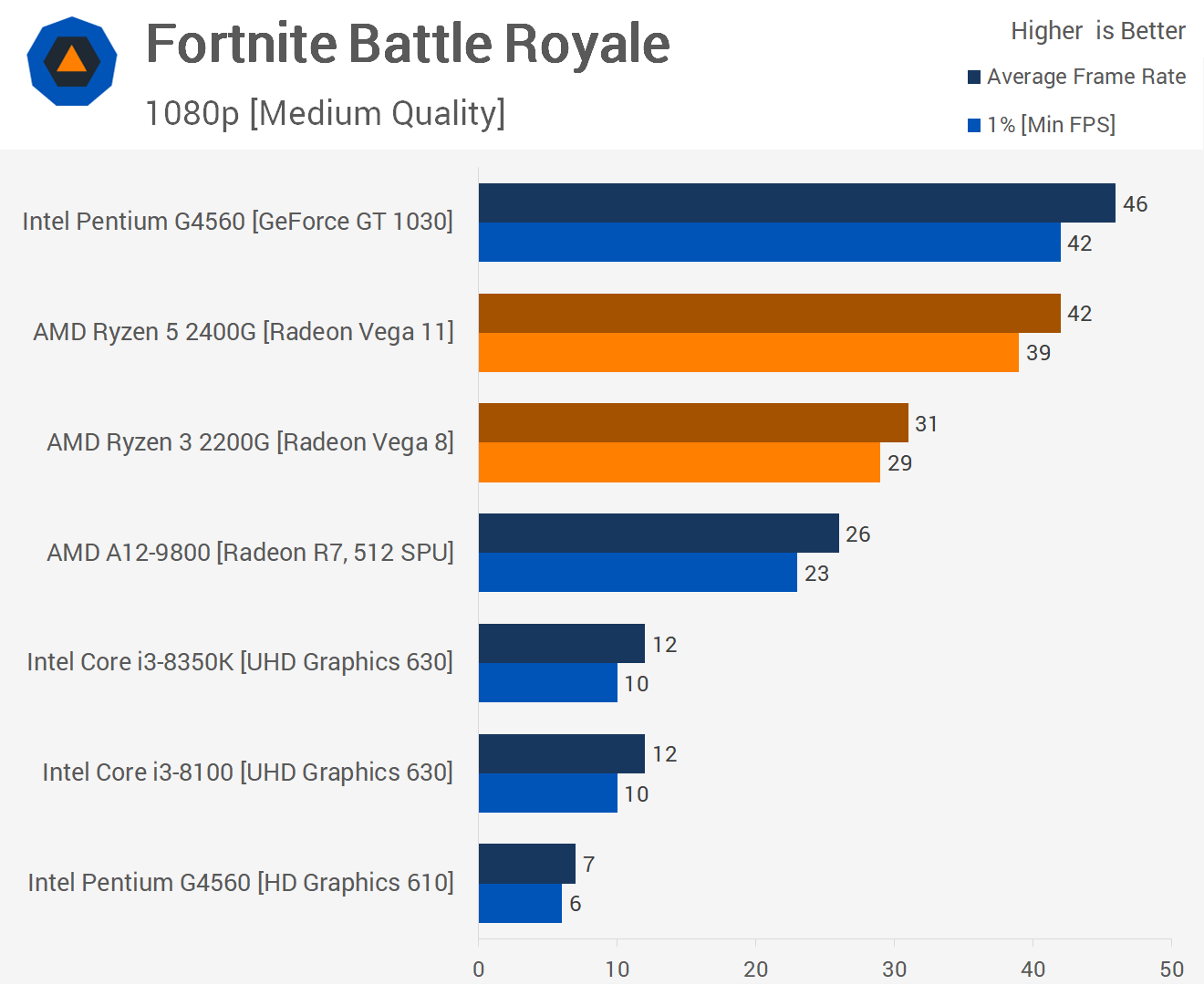
Unlike PUBG, Fortnite is quite good on the optimization front and although the G4560 and GT 1030 were faster, the 2400G offered exceptionally playable performance, never dipping below 70fps in our test. The 2200G also had little trouble delivering playable results with almost 60fps on average and this meant it was over 30% faster than the A12-9800 and well over twice as fast as the eighth-gen Core i3 processors.
The 2400G was still able to deliver playable performance at 1080p and remember we are using the medium quality settings here, so there is room to improve performance further. The G4560 and GT 1030 combo was just 10% faster, an impressive result for the 2400G. For those wanting to game at 1080p with the 2200G you will need to look at how it performs with the low quality settings.
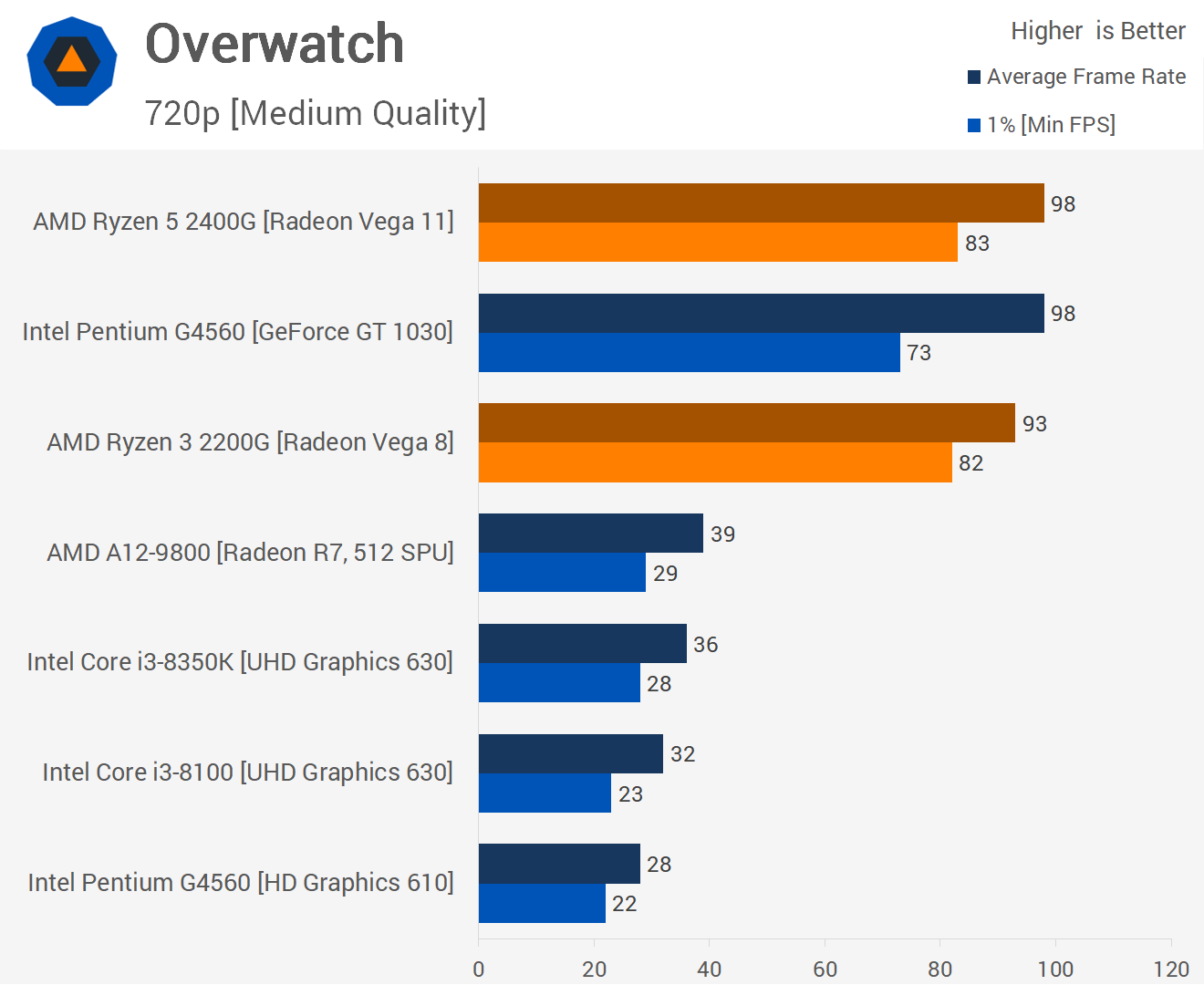

Overwatch and is a great game for stressing both the CPU and GPU. As you can see, the 2400G matched the G4560 and GT 1030 combo with 98fps on average, but was 14% faster for the 1% low result. The 2200G was also able to deliver a better 1% low result. Not only that, but compared to other integrated solutions the 2200G was a beast to deliver 138% more performance than the A12-9800 and 158% more than the 8350K.
The Raven Ridge APUs were again able to deliver playable performance at 1080p and the 2400G edged out the Pentium G4560 and GT 1030 combo for what was a truly impressive result.
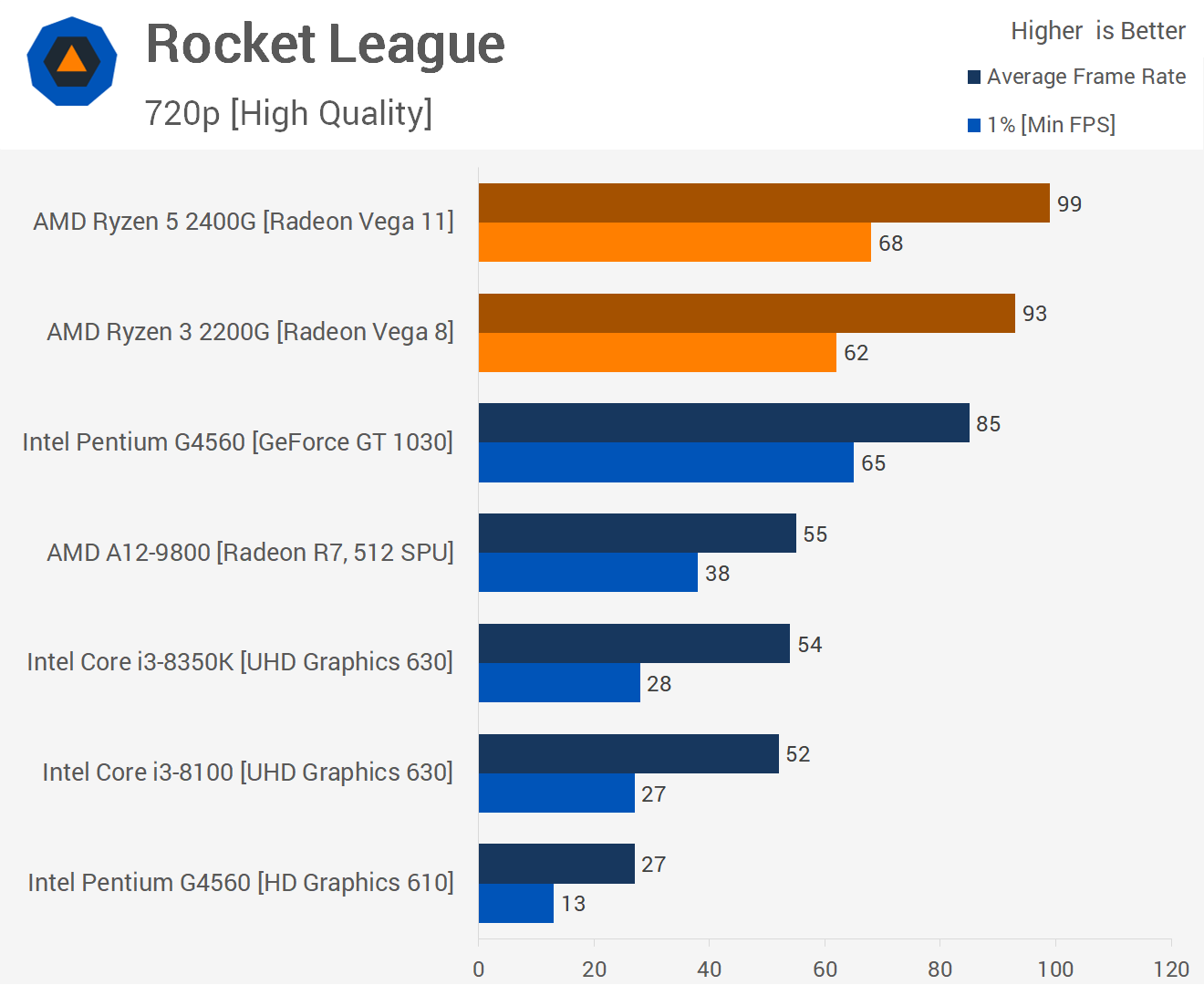

Those wanting to play Rocket League at 720p can do so using the highest possible in game quality settings and still achieve over 60fps at all times with either APU – that's pretty awesome, not to mention that both chips beat the GT 1030 by a comfortable margin and were almost twice ass fast as the A12-9800.
That said, at 1080p we seem to be running into a bandwidth issue as performance fell by 45% for the APUs whereas the Pentium G4560 and GT 1030 combo only took a 30% performance hit. Even at 1080p though, with the visual quality settings maxed out the game was quite playable using the new APUs.
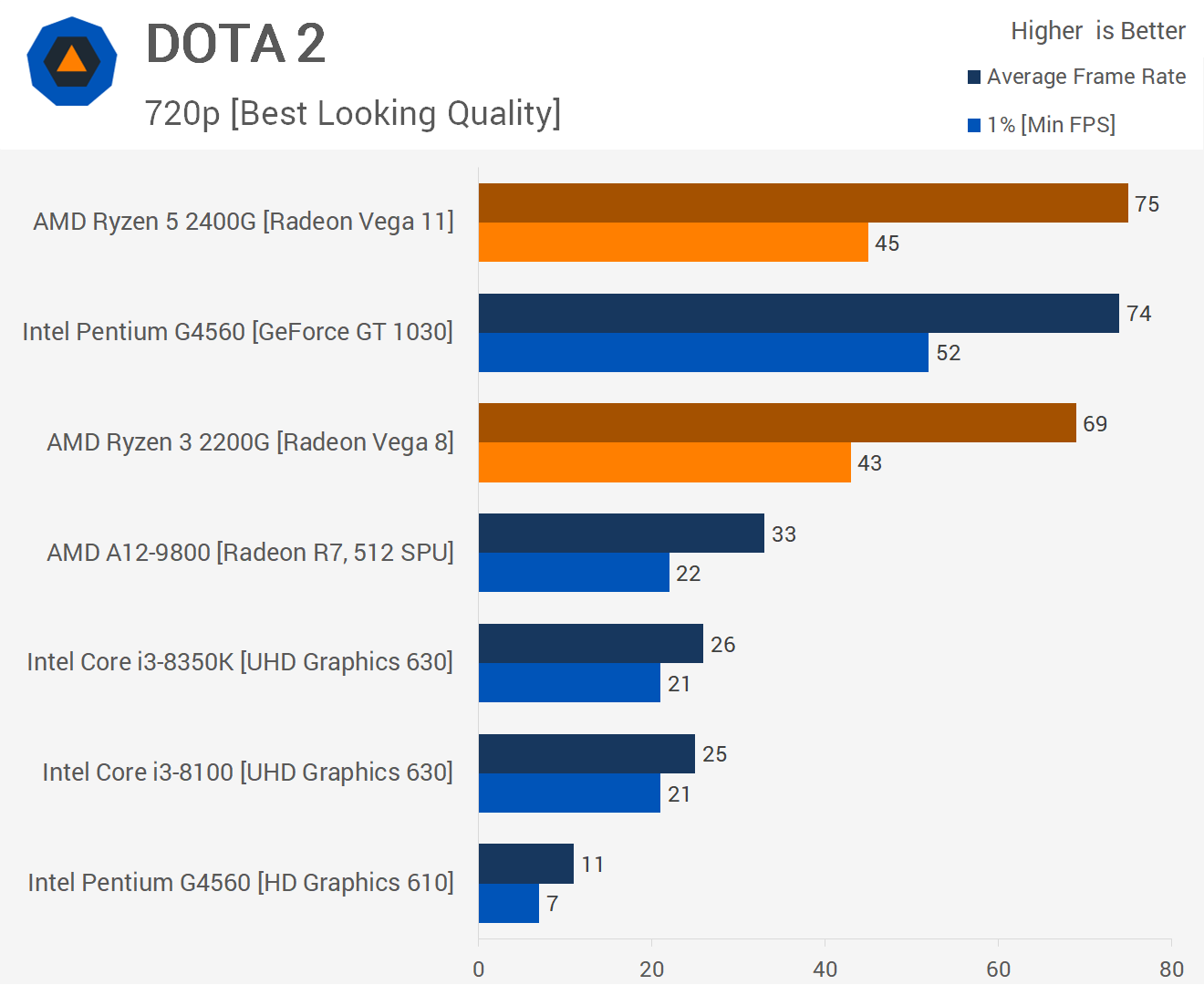

Moving on, we have Dota 2 and again the Raven Ridge APUs allow the visual quality settings to be maxed out at 720p. The G4560 did maintain better 1% low performance but still the APUs were mighty impressive overall. The 2200G in particular is a standout here with almost 70fps on average.
Again though, things start to come apart a little at 1080p and the discrete GPU paired with the G4560 now offers noticeably better performance. The 2200G was 35% faster than the A12-9800, which was worlds better than the eighth-gen Core i3 processors.

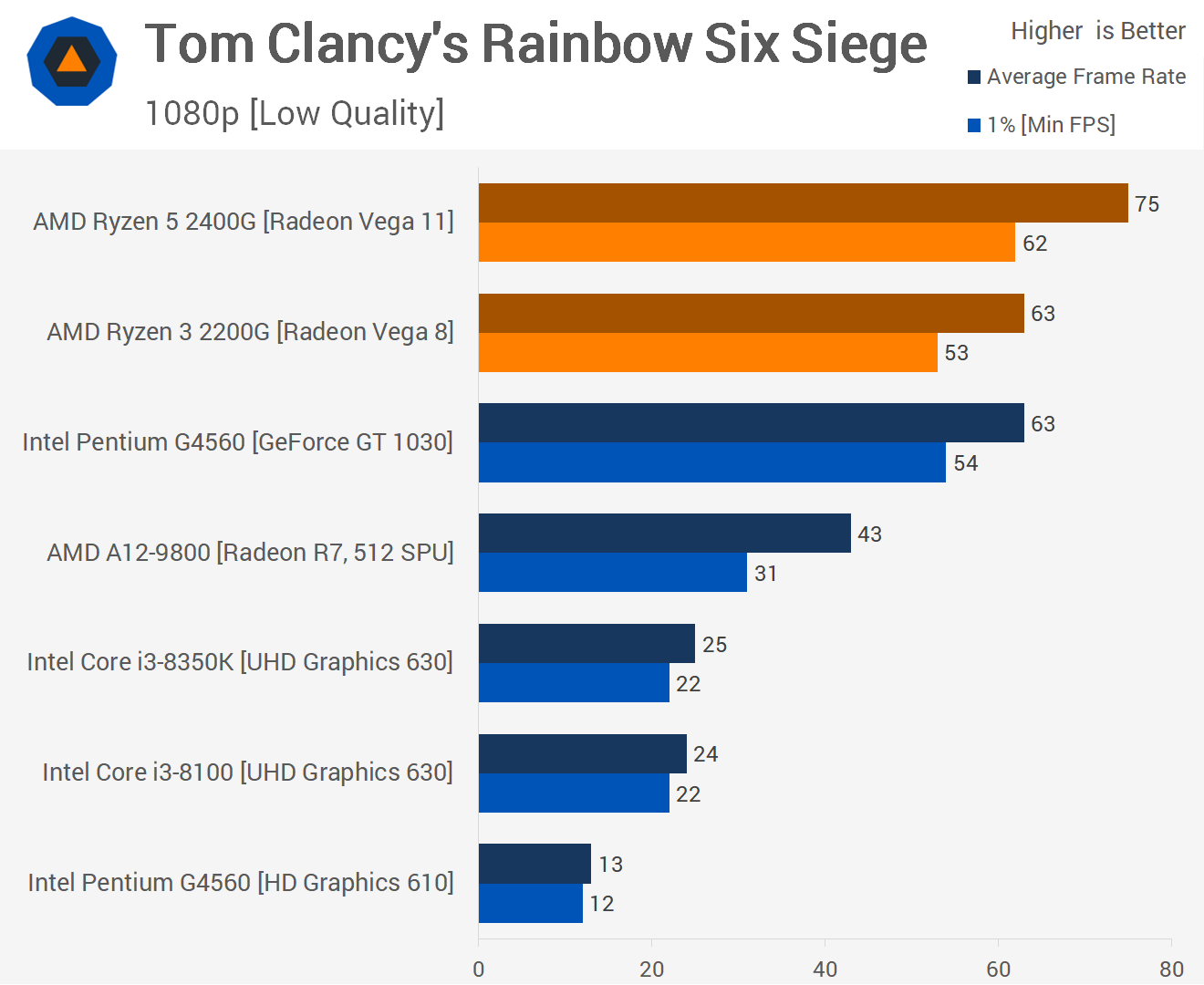
Next up, we have Rainbow Six Siege and although we're only using the low quality preset at 720p, I was still blown away by the results. The 2400G beat the Pentium G4560 and GT 1030 combo with relative ease while the 2200G was right there as well. Compared to the A12-9800, the 2200G was a whopping 56% faster and 154% faster than the Core i3-8350K.
Even at 1080p, the Raven Ridge APUs hung in there and in fact did exceptionally well. The 2200G matched the Pentium G4560 and GT 1030 combo while the 2400G was almost 20% faster. Not only that, but with 75fps on average with a minimum of 62fps the result was smooth gameplay.
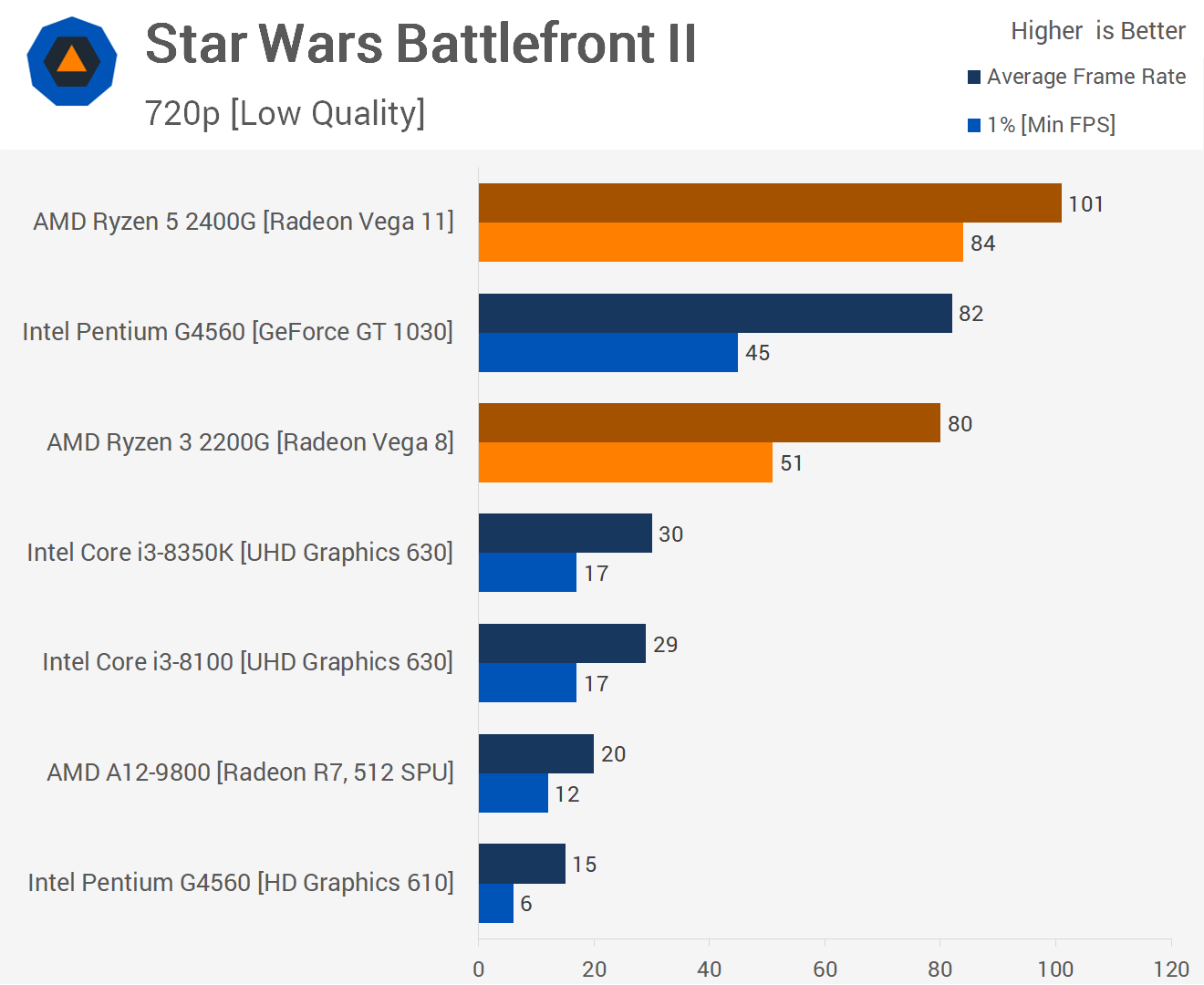

This shows us just how poorly optimized PUBG is: even with the low quality settings Battlefront II looks great and it plays great using either APU. The game really requires four real cores but if you can feed it eight threads then that's much better. Because of this, the 2400G was able to crush the G4560 and deliver 87% better performance for the 1% low result.
At 1080p, the Raven Ridge APUs do well, although the 2200G falls behind the G4560 and GT 1030 combo for the 1% low result, but they still put up exceptional performance overall. This CPU-intensive game cripples the A12-9800 and reduces it to the same miserable performance seen from the Core i3 processors.

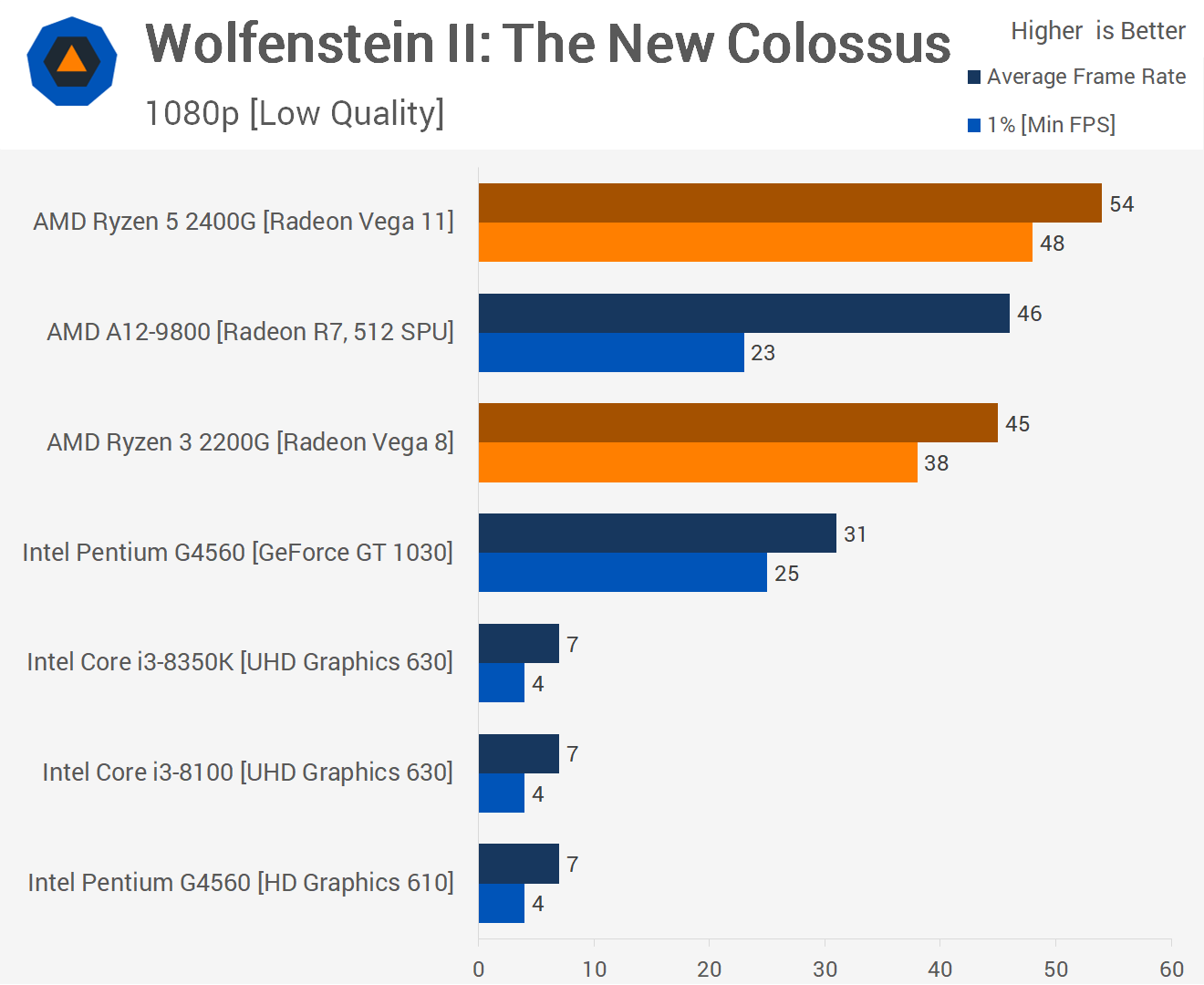
Unlike PUBG, Wolfenstein II is a title that loves AMD hardware. Here we see the 2400G spitting out an incredible 95fps on average with a 1% low result of 88fps – amazing. The 2200G might have been around 15% slower but it was just as impressive and beat the Pentium G4560 and GT 1030 combo by a 56% margin. It's odd how well the A12-9800 does for the average frame rate given its choppy 1% low result.
We see similar margins at 1080p and here it was really only the 2200G and 2400G that were able to deliver smooth playable performance, which is a great result for AMD.
